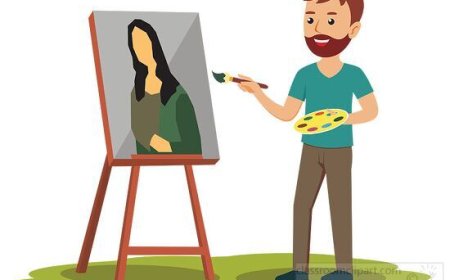Photography for Students – Learn the Art of Capturing Life Through a Camera
What is photography? Learn how cameras work, types of photography, famous photographers, and how to take amazing pictures as a student.

📷 Photography: Capturing the World Through a Lens
🌟 Introduction
Have you ever taken a picture with a phone, tablet, or camera? Then you’ve already practiced photography! Photography is the art of capturing images using light and a lens. A photo can freeze a moment in time, tell a story, or help us see the world in a new way.
From nature photos to selfies, photography is everywhere. It’s used in magazines, advertisements, science, journalism, and even space exploration. Whether you're using a professional camera or your phone, photography helps you observe, create, and share your point of view.
In this article, you’ll learn what photography is, how it works, the different styles photographers use, and how you can start taking great photos today.
📸 What Is Photography?
Photography is the process of recording an image by capturing light. The word "photography" comes from Greek and means “drawing with light.”
To take a photo, you need three basic things:
- Light, which reflects off objects.
- A lens, which focuses the light.
- A sensor or film, which records the image.
When you press the shutter button on a camera or phone, the camera captures light through the lens and stores the image as a digital file or on film. This moment becomes a photo that you can print, edit, or share.
Photography combines science and creativity. It requires knowing how to use light, angles, and timing while also thinking about mood, subject, and story.
📷 Types of Cameras
Today, there are many types of cameras. Each works differently, but they all rely on light, lenses, and timing.
- Smartphone cameras – The most common. Easy to use and always available.
- Digital cameras (DSLR and mirrorless) – Use advanced sensors and lenses. Preferred by professionals.
- Film cameras – Use rolls of film that need to be developed. Still used in art and retro photography.
- Instant cameras – Print photos instantly after taking them (like Polaroid).
- Action cameras – Small and tough, great for capturing sports or movement.
- Webcams and security cameras – Used for communication and surveillance.
No matter the type, the principles of good photography stay the same.
🖼️ Types of Photography
Photographers often choose a focus area or style depending on what they love to shoot. Here are some popular types of photography:
- Portrait Photography – Photos of people, often showing personality, expression, or relationships.
- Nature and Landscape Photography – Captures mountains, forests, oceans, and wildlife.
- Street Photography – Candid photos of everyday life in public places.
- Macro Photography – Close-up photos of small subjects like insects or flowers.
- Sports Photography – Action shots that freeze fast-moving moments.
- Photojournalism – Tells true stories through images, often in news or history.
- Fashion Photography – Showcases clothing and style, often used in magazines.
- Astrophotography – Photographs of stars, planets, and space.
Each style uses different techniques and equipment, but all help tell powerful visual stories.
🕰️ A Short History of Photography
Photography began in the early 1800s. The first photograph ever taken was in 1826 by Joseph Nicéphore Niépce, using a camera and a metal plate. The exposure took over 8 hours!
Soon after, Louis Daguerre created a faster method called the daguerreotype. Cameras became smaller, faster, and more accessible. In the 1900s, Kodak introduced cameras for everyday people.
In the 20th century, photography became an important part of journalism, art, science, and personal life. Digital photography arrived in the 1990s, replacing film for most uses. Today, photography is instant and global—shared instantly on phones and social media platforms like Instagram and Snapchat.
👩🎨 Famous Photographers and Their Impact
Photography has the power to change how we see the world. Here are a few photographers who used their lenses to make a difference:
- Ansel Adams – Captured stunning black-and-white photos of American landscapes, helping inspire national park protection.
- Dorothea Lange – Documented the Great Depression with emotional photos of families in need.
- Steve McCurry – Took the famous photo of the “Afghan Girl,” showing the power of portrait photography.
- Gordon Parks – Used photography to fight racism and show African-American life in the U.S.
- Annie Leibovitz – Known for artistic celebrity portraits published in major magazines.
These photographers used their skills to tell stories, share beauty, and even create social change.
🧠 Photography in Art Education
Photography is a vital part of Visual Arts in modern classrooms. According to the National Core Arts Standards, photography helps students:
- Create original images using cameras and editing tools.
- Present work by selecting, printing, or displaying photographs.
- Respond to photographs by analyzing meaning, mood, and technique.
- Connect photography to history, media, science, and personal experience.
Learning photography improves observation, patience, problem-solving, and visual storytelling—valuable in school and life.
📷 How to Start Taking Great Photos
You don’t need an expensive camera to start. Even a phone can help you take creative and meaningful photos.
Here are a few beginner tips:
- Pay attention to light – Natural light (like sunlight) often looks better than artificial.
- Think about composition – Use the “rule of thirds” to place subjects in interesting parts of the frame.
- Focus on a subject – Keep one clear focus in each photo.
- Try different angles – Shoot from above, below, or from the side to make your photo stand out.
- Keep the camera steady – Use both hands or rest your camera on a surface.
- Take lots of photos – Practice makes progress!
Photography is a skill that improves with observation, experimentation, and practice.
📘 Vocabulary
| Word | Definition |
|---|---|
| Lens | A curved glass part of a camera that focuses light |
| Shutter | A part of the camera that opens to let in light for a brief time |
| Exposure | The amount of light that hits the sensor or film |
| Composition | The way elements are arranged in a photo |
| Macro | A style of extreme close-up photography |
| Portrait | A photo focused on a person’s face or expression |
| Photojournalism | Using photos to report real events and stories |
🌟 Interesting Facts About Photography
- The first selfie was taken in 1839 by Robert Cornelius.
- A camera on the Mars Rover takes pictures from another planet!
- The word “snapshot” comes from hunting, meaning to take a quick shot.
- Some photographers use pinhole cameras made from cardboard boxes and light-sensitive paper.
- Every two minutes, people take more photos today than were taken in all of the 1800s!
🧾 Key Takeaways
- Photography is the art and science of capturing images using light and cameras.
- It includes many styles like portrait, landscape, macro, and street photography.
- Famous photographers have used photos to tell powerful stories and document history.
- With basic tools and creative thinking, students can start exploring photography right away.
- Photography builds observation, creativity, and communication skills that are useful in every subject.
🎯 Interactive Quiz
1. What is photography?
A) The art of drawing cartoons
B) Writing poems about light
C) Capturing images using light and a lens
D) A way to paint with watercolors
2. What is the main function of a camera lens?
A) Make sound
B) Focus light onto the sensor
C) Store memory
D) Print the photo
3. What type of photography shows people’s faces and expressions?
A) Landscape
B) Portrait
C) Macro
D) Street
4. Which photographer is famous for photos of U.S. national parks?
A) Dorothea Lange
B) Gordon Parks
C) Ansel Adams
D) Steve McCurry
5. What does “composition” mean in photography?
A) The sound of the shutter
B) The battery life of a camera
C) The way things are arranged in a photo
D) The temperature of the lens























































